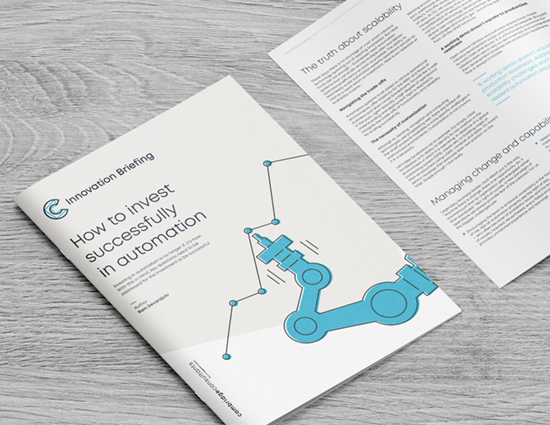
Quantum computing adoption – it’s time to seize the initiative
Quantum technology commercial adoption will be gradual – but that doesn’t mean ambitious business leaders should adopt a wait and see approach.

Quantum technology commercial adoption will be gradual – but that doesn’t mean ambitious business leaders should adopt a wait and see approach.

AIはビジネスや社会に変革をもたらしますが、AIの倫理やセキュリティなど多くの点については依然として懸念が存在します。このイノベーションブリーフでは、AI保証がビジネスや組織の将来をどのように保護しうるか、弊社の専門家が説明します。そして、包括的なアプローチによって永続的かつ効果的な変化への道をどのように切り拓くかを明らかにします。

Automation trends to look out for in 2023. Chris Roberts, Head of Industrial Robotics, makes his predictions for 2023.

サイバーフィジカル分野におけるイノベーションのアイデアを思い付いた場合、次のステップはどうすればよいのでしょうか?誰もが何から取り組むのか理解していたり、成功する自信があるわけではありません。当社では、DVF(Desirability:必要性、Viability:持続可能性、Feasibility:実現可能性) で知られるデザイン思考の手法を採用し、製品開発を進めています。

自動化に逆らうという選択肢はもはやありません。そのため、世界の経営幹部の関心は、ROI(投資収益率)の問題から三つの基本的な問題に移っています。すなわち、どのようなロボット工学と自動化を進めるすべきか、自動化はどのようにして自社の事業をより強固にできるか、そして、自動化、自律化、およびそれら成功に向けてどのようにビジネスの準備を進めれば良いか?という問題です。

The number of suppliers is going up, costs are coming down, systems are getting smaller and becoming more off-the-shelf and less bespoke. All this means that automation is not just for the big players – smaller warehouses can automate too.